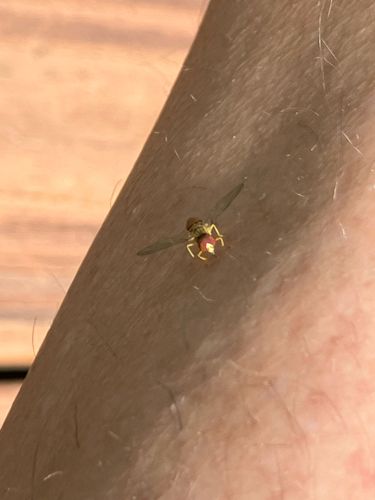Hoverfly (Flower Fly)
Scientific Name: Various species within the family Syrphidae (e.g., Eristalis tenax, Episyrphus balteatus)
Order & Family: Order: Diptera (True Flies), Family: Syrphidae
Size: Generally, hoverflies range from 4 mm to 20 mm in length, depending on the species.

Natural Habitat
Hoverflies are found in a wide range of habitats where flowering plants and their prey (like aphids) are present, including gardens, agricultural fields, meadows, forests, and urban green spaces. They are common near flowering vegetation.
Diet & Feeding
Adult hoverflies primarily feed on nectar and pollen from flowers. The larvae are carnivorous, feeding on a variety of soft-bodied insects, especially aphids, but also thrips, small caterpillars, and other small arthropods.
Behavior Patterns
Hoverflies are known for their ability to hover seemingly motionless in mid-air, resembling small hummingbirds. They are active during the day, especially in sunny conditions. Adults are frequent visitors to flowers, where they feed on nectar and pollen. Females lay eggs near colonies of aphids or other soft-bodied insects, and the hatched larvae are voracious predators.
Risks & Benefits
Benefits: Hoverflies are highly beneficial insects. As adults, they are important pollinators of many crops and wild plants. Their larvae are significant biological control agents, preying on agricultural pests like aphids, reducing the need for chemical pesticides. Risks: They pose no known risks to humans. They do not sting or bite, despite their mimicry of bees and wasps.
Identified on: 8/14/2025